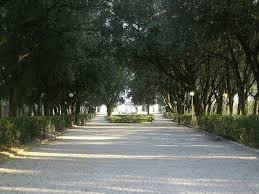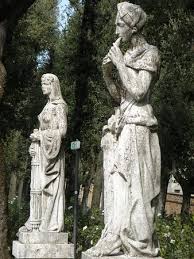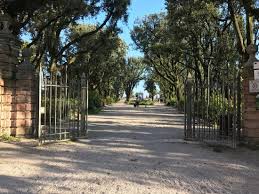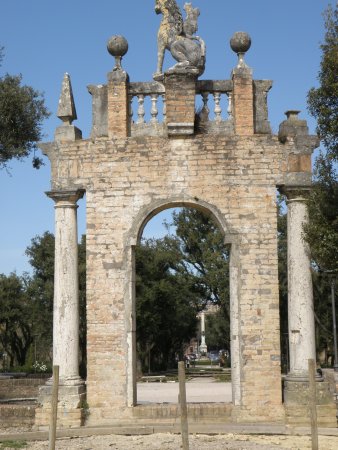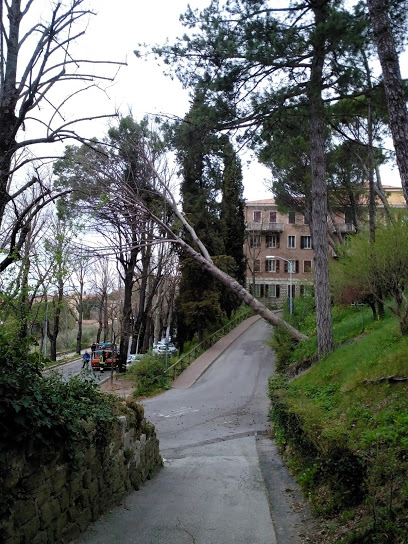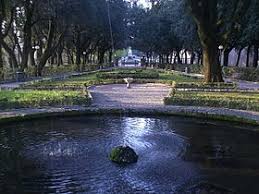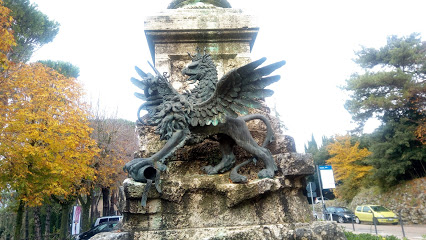It is located in Borgo XX Giugno or Borgo Bello, next to San Pietro Church.
The vegetation combination is simple but valuable, with perennial and seasonal herbaceous plants and Holm oak centuries ago, a symbol of antiquity and the importance of this place.
Assets
Since 1275, in the civil records, a battlefield has been mentioned in the stone-throwing game, a playful activity involving not only young people, and the passion of the Perugians; the venue for this entertainment is where Frontone Gardens is now located.
Under Braccio Fortebraccio, between 1414 and 1420, walls were built around the site that was used as a "yard of arms" for military training for young people, to the point that it was called "Piazza d'Armi di Braccio".
However, the times changed, at the end of the fifteenth century, paved the way for entertainment with the military background to the new entertainment such as the race for the prize and the many tournaments and concerts, until the gardens took the name "Piazza de More" with Braccio Baglioni.
The colony of August
At the time of the death of Baglioni, Frontone was abandoned, and there are no sources about what it was used: so it is believed to have remained unused and left in the hands of nature without cultivation until the eighteenth century, when the Arcadia Academy entered its entrance to Perugia. The Arcadian, the Roman scholars, imitated the habits of Arcadia, the province of Boeotia, to oppose the bad taste that dominated Italian literature in that century.
In August 1707 the colony of Augustine was established. On October 14 of that year, the first meeting was held in which the head of the monastery, Jacinto Vincioli, was a man of great knowledge.

